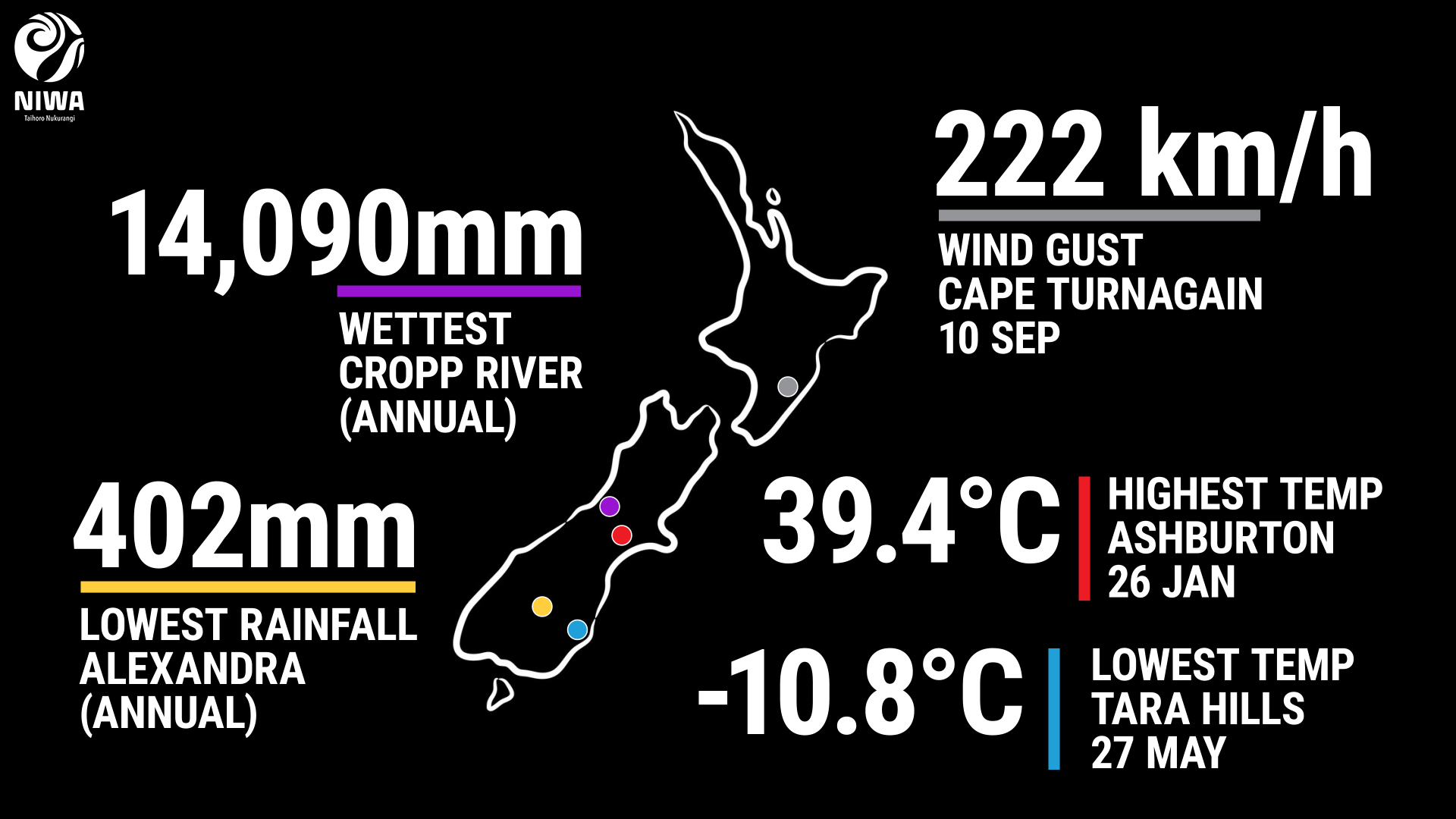2021 was New Zealand’s warmest year on record, according to NIWA’s annual climate summary for 2021.
Aotearoa New Zealand is becoming hotter, with seven of the past nine years among the warmest recorded, in a trend consistent with global warming. 2021 also contained a variety of significant weather and climate events, from droughts to floods.
The SMC asked experts to comment.
James Renwick, Victoria University of Wellington comments:
“New Zealand had its warmest year on record in 2021, continuing a series of warm years consistent with our warming and changing climate. The warmth was of course helped along by the background global warming trend, but was also a result of the natural variability of the climate. Notably, the Southern Annular Mode (SAM) was positive for much of the year, bringing lighter winds and warmer conditions to the country. The SAM has been trending positive for decades now, because of human influence – mostly the ozone hole but also the increase in greenhouse gases in the air. La Niña conditions in the tropical Pacific also helped bring warm air and warm seas, later in the year.
“Many heavy rainfall events occurred through the year, with massive floods in both the east and the west of the South Island. Such events are also indicative of the changing climate, with a warmer atmosphere holding more moisture. We can expect more and more of the same in future – the record high temperatures we have just experienced would be counted as a cold year by the 2040s. The whole world needs to stop emitting carbon dioxide and other greenhouse gases as soon as possible, to have any hope of capping climate change at a manageable level.”
No conflicts of interest.
Luke Harrington, Senior Research Fellow in Climate Science, New Zealand Climate Change Research Institute, Victoria University of Wellington comments:
“16 stations experienced some of their hottest ever days in 2021, while only one station experienced its coldest day on record. That about sums up climate change in New Zealand: in the future, every cold record broken will be accompanied by another 5-10 hot records, if not more. Things will only improve if we reduce our gross carbon dioxide and nitrous oxide emissions. Permanently, rapidly, and immediately.”
No conflicts of interest.
Nathanael Melia, Adjunct Senior Research Fellow, New Zealand Climate Change Research Institute, Victoria University of Wellington comments:
“It’s official, 2021 wins the award for the hottest year on record, aided by a significant head start thanks to climate change. Every year we spin the roulette wheel of weather variability; however, like a casino, we have rigged the game, and the hothouse always wins in the end.
“Aotearoa New Zealand sits in a privileged position globally to shelter from climate change. Deep in the South Pacific and surrounded by ocean, the effects of rising global temperatures due to climate change are moderated. However, our protective waters have been pulsing up to 3˚C recently, inexorably driving up our surface air temperatures.
“These higher background temperatures are exacerbating extreme weather events around the country. Heat extremes are getting hotter, and extreme rain events are getting wetter. Summer 2022 has continued at full throttle too, and with the weather variability wheel landing on La Niña, I wouldn’t be surprised to see 2022 result in a back to back record.”
No conflicts of interest.
Nick Cradock-Henry, Senior Scientist, Manaaki Whenua – Landcare Research comments:
“The annual climate summary from NIWA highlights, once again, the inexorable changes in local, regional and national conditions, and the implications for lives and livelihoods, the effects on agricultural productivity, disruptions to critical infrastructure and supply chains due to flooding.
“The report documents above average temperatures – including, once again, the warmest year on record – extreme rainfall events, and ongoing evidence of warming and drying trends throughout Aotearoa. While this recent erratic climate variability and recurrence of extremes is known to be modulated by the El Niño–Southern Oscillation, or ENSO, an interannual perturbation of the climate system characterized by variations in the temperature of the surface water and air surface pressure of the eastern and western Pacific Ocean, it is nonetheless consistent with projected changes in climate due to greenhouse gas emissions.
“Climate change is one of the most important challenges faced by human society, and adaptation to climate change impacts is therefore both urgent and inevitable. Effective adaptation to climate variability and change is fundamental to protecting society to the extent possible for climate variability and change. Our collective experience and capacity to adapt is based, at least in part, on how we have responded to past climate events. There is evidence, for example, of some primary industries successfully managing past threats linked to climate variability, and this could be an important source of knowledge that can be useful when facing threats that are likely to be more frequent and intense in the future.
“However, it is also necessary to acknowledge the spatially and socially differentiated nature of impacts. Mana whenua, rural regional communities, and climate-sensitive primary industries are particularly vulnerable, and investing now in risk reduction measures, building capability and capacity for adaptation and decision-making in the face of uncertainty, can enhance resilience to deliver better outcomes in the face of climate change and other stressors.”
No conflicts of interest.
